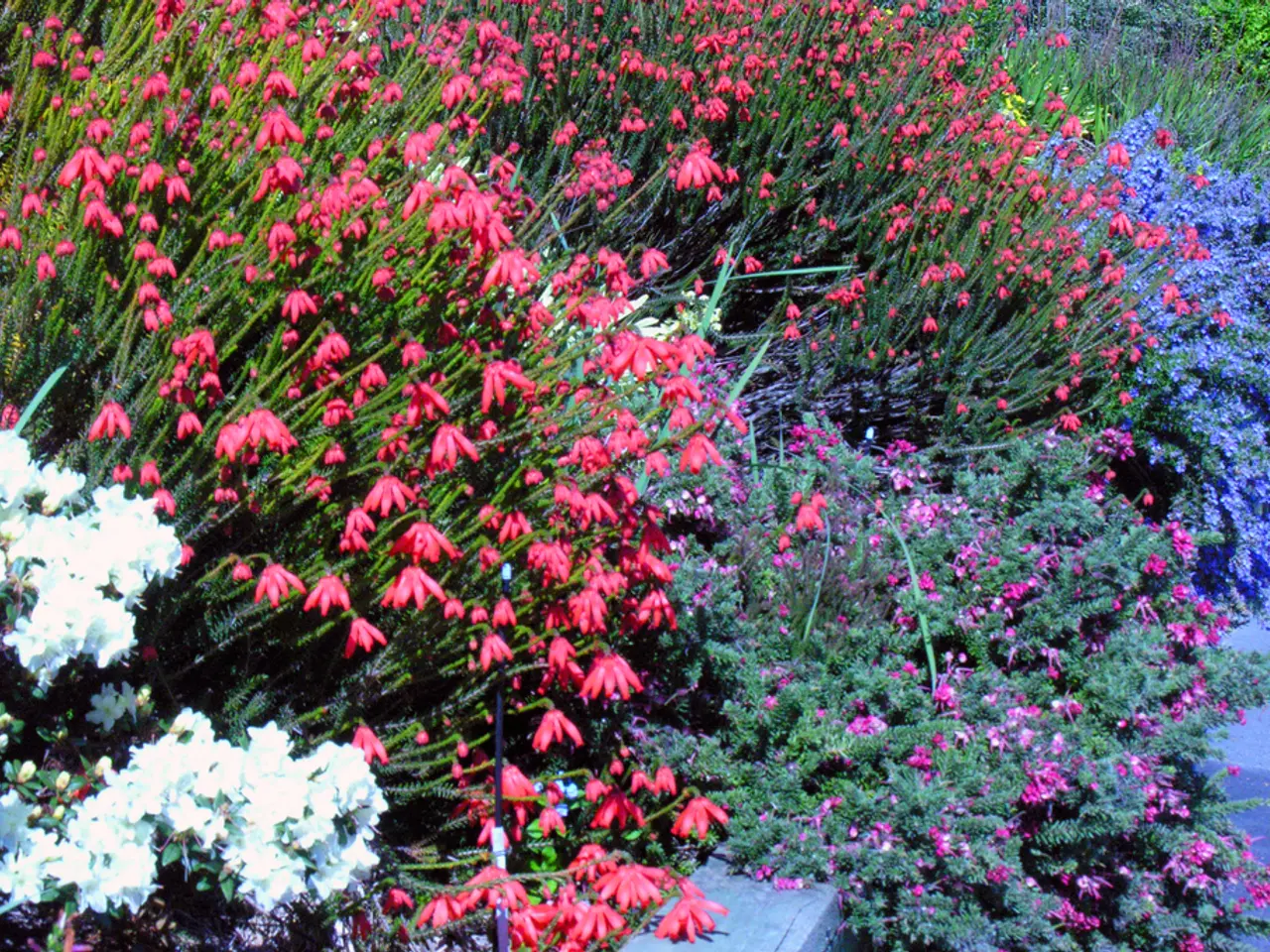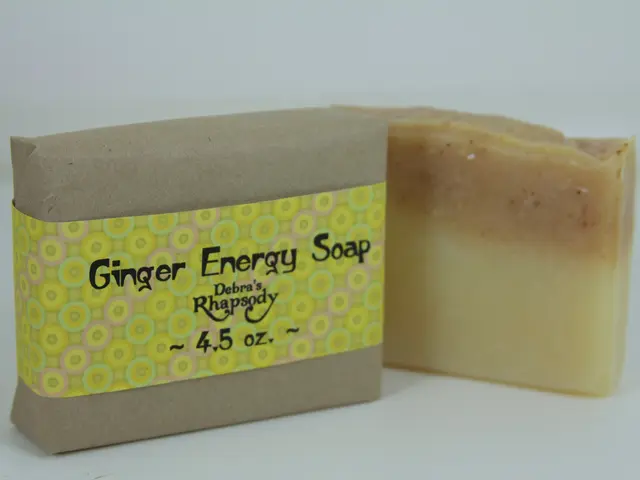Altering Hydrangea Colors in July: Possible or Not?
In the captivating world of gardening, few plants captivate the imagination quite like hydrangeas, with their stunning blooms that change colour according to soil conditions. Here's a comprehensive guide on how to influence hydrangea colours, particularly in the tricky July period, and what effects these changes may have on current and future blooms.
## Influencing Hydrangea Colour
### Soil pH and Aluminium Availability
The key to achieving blue or pink hydrangea flowers lies in the soil's pH level and the presence of aluminium ions. To encourage blue flowers, maintain a low soil pH (acidic) by using rainwater and adding aluminium sulfate. For pink flowers, raise the soil pH (alkaline) by adding lime or crushed eggshells [1][5].
### Water Type
Using rainwater instead of tap water (which can be alkaline) helps maintain or achieve blue colours [1].
### Sun Exposure
While intense sunlight can produce more vivid colours, it may not be ideal for maintaining the blue hue. Shaded or partially shaded spots can help preserve the blue colour [1].
### Stress and Soil Changes
Stress and changes in soil conditions, such as differences in pH or nutrient availability, can cause variations in flower colour. For example, self-layering plants may exhibit different colours due to differences in soil pH in their new location [2].
## Effects on Current and Future Blooms
- **Current Blooms**: Once formed, the colour of current blooms is unlikely to change significantly. However, adjustments in soil pH and water type can influence the colour of new buds forming for future blooms. - **Future Blooms**: Changes in soil pH, aluminium availability, and water type will primarily affect the colour of future blooms. For example, if you want to maintain blue colours, ensuring the soil remains acidic and rich in aluminium will be crucial. - **Long-term Impact**: Consistent care practices will help stabilise the colour of hydrangea blooms over time. It may take several months for noticeable changes as the plant adjusts to new conditions.
## Additional Tips
- **Soil Testing**: Regularly test your soil to ensure it has the desired pH level and nutrient balance. - **Container Gardening**: Using containers allows for easier control over soil pH and nutrient levels, providing flexibility in maintaining or changing hydrangea colours [4]. - Document this year's results with photos and notes to track progress; hydrangea colour changes often take multiple seasons to fully develop. - Hydrangea macrophylla, commonly known as bigleaf hydrangea, is the variety most renowned for its colour-changing abilities. - The colour transformation in hydrangeas is due to the soil's pH level, which determines how much aluminium the plant can absorb. - Mountain hydrangeas (Hydrangea serrata) respond well to soil amendments, but their colour range is more subtle than bigleaf types. - Newer cultivars explicitly bred for colour stability may resist efforts to change them. Check plant tags or research your specific variety to understand its colour-changing potential. - The journey of guiding hydrangeas towards your preferred palette becomes part of gardening's ongoing joy. - Beyond pH: Other factors affecting hydrangea colour include heat stress during July, which can fade bloom colours regardless of soil conditions, and consistent moisture, which affects nutrient absorption. - For container hydrangeas, use half the recommended amount of any amendment and monitor plants closely. - Embrace the colour you have: Your local soil conditions might naturally produce gorgeous purple hydrangeas, a lovely middle ground between pink and blue. - Expecting dramatic changes in fully mature blooms sets you up for disappointment; focus on younger blooms and future flower production. - Blue hydrangeas pair beautifully with yellow companions like black-eyed Susans, while pink varieties harmonise with purple salvias and white shasta daisies. - The changing colours of hydrangeas serve as beautiful indicators of soil conditions and seasonal shifts, deepening your connection to your garden space. - Compost tea provides micronutrients that support overall plant vigour, potentially resulting in more vibrant blooms of whatever colour your soil pH dictates.
[1] To acidify soil for blue hydrangeas, use aluminum sulfate or garden sulfur. Coffee grounds, pine needles, and peat moss can also be used as mulch for gradual acidification. [2] Panicle hydrangeas (Hydrangea paniculata) and oakleaf hydrangeas (Hydrangea quercifolia) won't change colour regardless of soil amendments; their flower colours are genetically fixed. [3] Providing afternoon shade helps preserve colour intensity during summer's hottest days. [4] Collecting rainwater provides a neutral water source for container hydrangeas in July. [4] Fall represents an excellent time for major pH adjustments; apply amendments after plants finish blooming but before winter dormancy. [5] To raise soil's pH for pink hydrangeas, use garden lime or wood ash. Crushed eggshells can also be used to raise pH over time. [6] Foliar spray of diluted aluminum sulfate (one tablespoon per gallon) misted on leaves (not flowers) once weekly may enhance colour absorption for blue blooms. [7] During July's heat, maintain even soil moisture with regular deep watering and a layer of organic mulch. [8] In acidic soils (pH below 6.0), hydrangeas produce blue flowers. In alkaline soils (pH above 6.5), pink blooms develop. [9] Embrace the experimental nature of gardening and enjoy the process of discovery. Let your hydrangeas teach you about your garden's unique characteristics. [10] Common Mistakes in Mid-Season Color Changes: Overapplying amendments can damage roots and create long-term soil problems. Applying amendments directly to leaves or flowers can burn plant tissue. [11] Reblooming varieties like Endless Summer and Let's Dance series hydrangeas offer opportunities for July color changes in existing and future blooms. [12] Container hydrangeas respond more quickly to pH adjustments than those planted in the ground. [13] Epsom salts contribute magnesium, which some gardeners believe intensifies pink and blue colors; dissolve one tablespoon in a gallon of water and apply to the soil monthly. [14] Always apply soil amendments to the soil around plants, not the plants themselves, and water thoroughly afterward. [15] Always apply soil amendments to the soil around plants, not the plants themselves, and water thoroughly afterward. [16] July is a somewhat tricky period for influencing hydrangea colour, as the blooms seen in July began forming inside the plant during the previous year.
Gardening enthusiasts looking to diversify their home-and-garden lifestyle might discover the joy of mastering hydrangea colour change, specifically in the 'lifestyle' category of 'home-and-garden'. By understanding the impact of soil pH, water type, and sun exposure on hydrangea colours, one can cultivate either blue or pink hydrangeas successfully. For instance, to achieve blue flowers, maintain a low soil pH by using rainwater and adding aluminium sulfate, while for pink flowers, raise the soil pH by adding lime or crushed eggshells.








